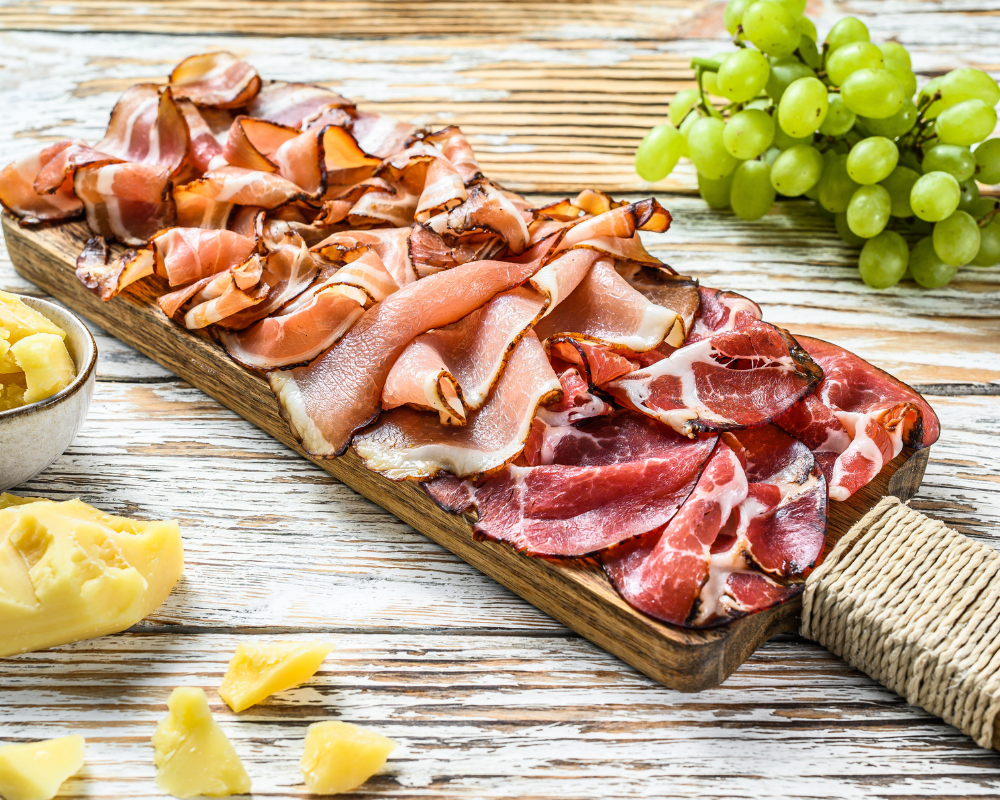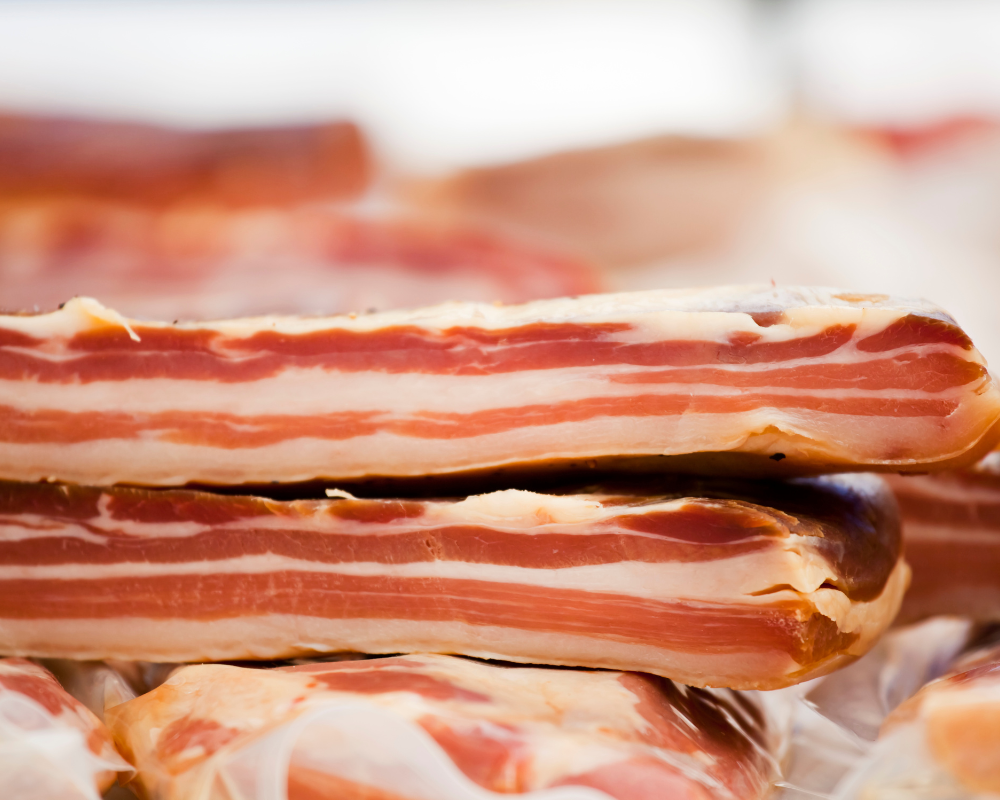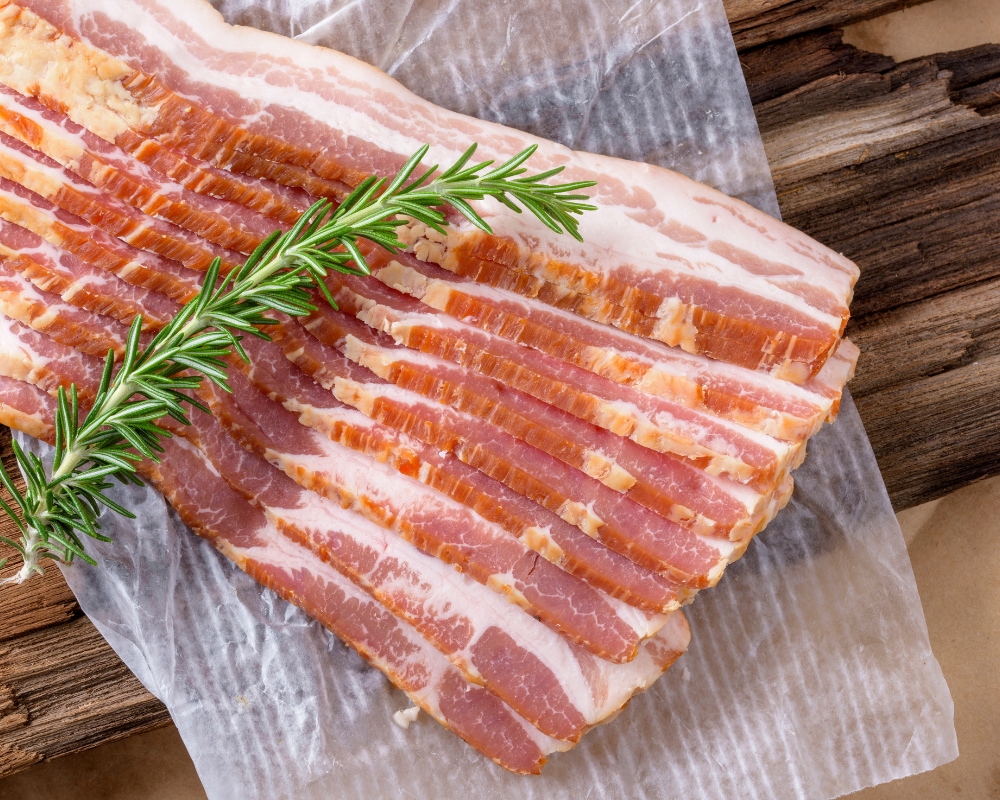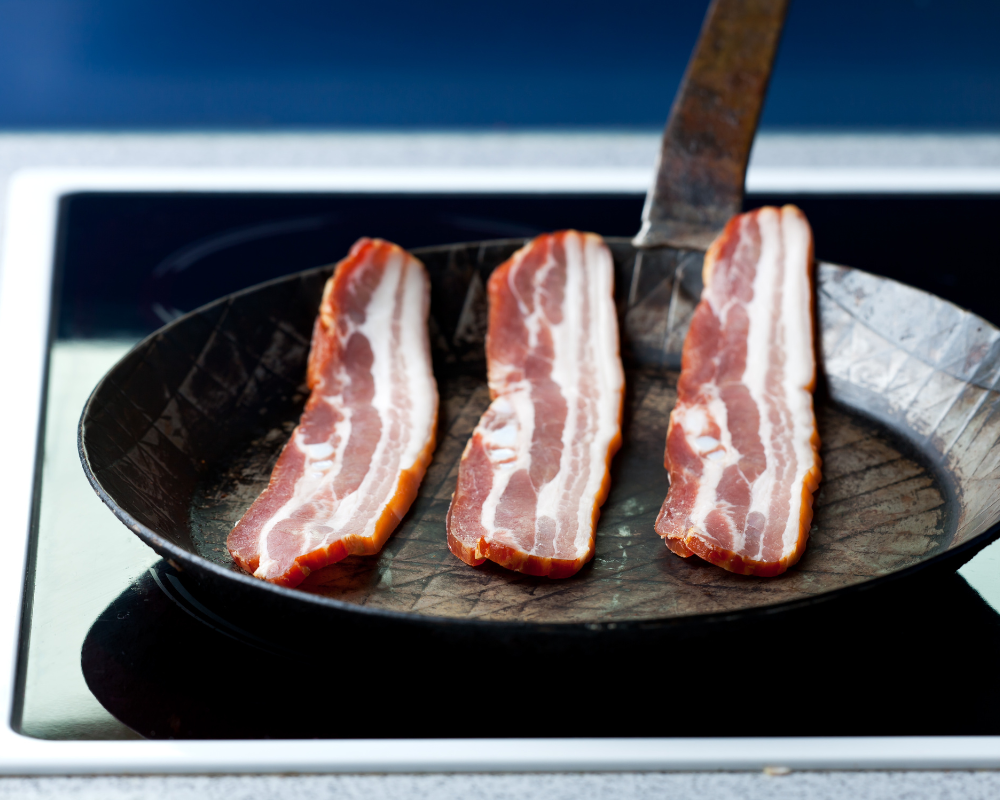A sort of cured beef called pancetta is becoming more and more common in kitchens all across the world.

It is produced from pork belly that has been salted, occasionally with sugar, and spiced with herbs and spices like cinnamon, nutmeg, cloves, and black pepper.
Similar to bacon, but not smoked, pancetta is typically consumed raw or cooked. Italian specialty pancetta can be bought diced or sliced.
For sandwiches or antipasto platters, sliced pancetta is preferable to cubed pancetta. It is used to give soups, stews, pasta sauces, and other foods a rich, meaty flavor.
In recipes, pancetta can also be used in place of bacon. It is a flexible ingredient that may give any dish depth and complexity.
What is Pancetta?
Pancetta is a type of cured pork that originates from Italy. It is made from the pork belly and is seasoned with salt, spices, and other ingredients.

Pancetta is a popular ingredient in Italian cuisine and is commonly used in pasta dishes, pizzas, and salads.
Definition
Pancetta is a type of Italian charcuterie that is made from pork belly. It is cured with salt, spices, and other ingredients, and then dried for several weeks.
Pancetta is unsmoked and has a light pink color and a silky texture. It can be eaten cooked or uncooked, depending on the recipe.
Origins
Pancetta has been a staple of Italian cuisine for centuries. It is believed to have originated in the northern region of Italy, where it was used as a way to preserve pork during the winter months.
Today, pancetta is still produced in many regions of Italy, and it is also exported to other countries around the world.
Types of Pancetta
There are several types of pancetta, each with its own unique flavor and texture. Some of the most common types of pancetta include:
- Pancetta Tesa: This is the most common type of pancetta, and it is made from pork belly. It is seasoned with salt, pepper, and other spices, and then rolled and tied with string. Pancetta tesa is typically sliced thinly and used in a variety of dishes.
- Pancetta Arrotolata: This type of pancetta is rolled and tied with string, like pancetta tesa, but it is also seasoned with garlic and other herbs. Pancetta arrotolata is often used in pasta dishes and other Italian recipes.
- Pancetta Affumicata: This type of pancetta is smoked, which gives it a distinct flavor. It is typically used in recipes that call for a smoky flavor, such as carbonara.
Pancetta is a versatile and delicious ingredient that adds flavor and texture to a variety of dishes. Whether you are a fan of Italian cuisine or simply looking to try something new, pancetta is definitely worth a try.
How is Pancetta Made?
Pancetta is a type of cured meat made from pork belly. The process of making pancetta involves curing the pork belly in salt and other seasonings, followed by air-drying it for several weeks.
Here’s a breakdown of the steps involved in making pancetta:

Curing Process
The first step in making pancetta is to cure the pork belly. This involves rubbing the meat with a mixture of salt, sugar, and other seasonings such as juniper berries, garlic, and rosemary.
Some pancetta recipes also call for the meat to be soaked in a brine solution before being rubbed with the curing mixture.
After the meat is coated in the curing mixture, it is wrapped tightly in plastic wrap or cheesecloth and left to cure in the refrigerator for several days.
The length of time the meat is cured depends on the desired flavor and texture of the pancetta.
Seasonings
Pancetta is flavored with a variety of seasonings, including black pepper, cloves, nutmeg, cinnamon, and juniper berries.
Different pancetta recipes call for different combinations of seasonings, and some may also include additional ingredients such as garlic or rosemary.
Smoking
Some pancetta recipes call for the meat to be cold-smoked after it has been cured and air-dried. The smoking process involves exposing the meat to smoke from burning woods such as apple, cherry, or hickory. This gives the pancetta a distinctive smoky flavor and aroma.
However, not all pancetta is smoked. Some varieties, such as pancetta affumicata, are cold-smoked to give them a smoky flavor, while others are simply air-dried without any smoking.
The process of making pancetta is a delicate and time-consuming one that requires patience and attention to detail. However, the end result is delicious and flavorful cured meat that can be used in a variety of dishes.
Pancetta vs. Bacon
When it comes to cured pork belly products, bacon and pancetta are two of the most popular. While they share some similarities, there are also some key differences that set them apart.

In this section, we will compare pancetta and bacon in terms of their fat content, cooking methods, flavor, texture, and uses.
Fat Content: Pancetta is generally fattier than bacon, with a higher fat-to-meat ratio. This makes pancetta a great choice for adding flavor to dishes, but it can also make it more difficult to cook with. Bacon, on the other hand, has a lower fat content and is easier to cook with.
Cooking Methods: Both pancetta and bacon can be cooked in a variety of ways, including frying, baking, and grilling.
However, because pancetta is fattier than bacon, it can be more difficult to cook without burning. Pancetta is often used in cubes or thin strips, while bacon is usually sliced into thicker strips.
Flavor and Texture: Pancetta has a unique flavor profile that is often described as smoky and salty with a hint of pepper. It also has a slightly chewy texture.
Bacon, on the other hand, has a more intense smokiness and a crispy texture. Both pancetta and bacon are known for their umami flavor, which adds depth and complexity to dishes.
Color: Pancetta is usually a light pink color, while bacon is darker and redder. This is because pancetta is cured with a blend of spices, including black pepper and cinnamon, while bacon is cured with salt and nitrates.
Uses: Pancetta and bacon can be used in a variety of dishes, from sandwiches to stews to risotto. Pancetta is often used in Italian dishes, such as carbonara and pasta alla gricia, while bacon is a staple in American breakfasts.
Pancetta is also a popular addition to mushroom dishes, while bacon is often used to add smokiness to dishes.
Substitutes: While pancetta and bacon are not interchangeable in all recipes, there are times when you can substitute one for the other. For example, if a recipe calls for pancetta and you don’t have any, you can often use bacon instead.
However, keep in mind that the flavor and texture of the dish may be slightly different.
Refrigeration and Quality: Both pancetta and bacon should be stored in the refrigerator to ensure freshness.
When purchasing pancetta or bacon, look for high-quality products with a good fat-to-meat ratio. This will ensure that you get the best flavor and texture from your cured pork product.
Pancetta and bacon are both delicious cured pork belly products that can add flavor and depth to a wide range of dishes.
Whether you prefer the smokiness of bacon or the umami flavor of pancetta, both products have their place in the kitchen.
Cooking with Pancetta
When it comes to cooking with pancetta, there are a variety of recipes and uses to explore. Here are some of our favorite ways to incorporate this flavorful ingredient into our meals.

Recipes
Pancetta can be used in a variety of dishes, from pastas to pizzas to salads. One classic Italian dish that features pancetta is pasta carbonara, which combines pancetta with eggs, cheese, and black pepper for a creamy, savory sauce.
Another popular dish is spaghetti alla carbonara, which features similar ingredients but with spaghetti instead of another pasta shape.
Uses in Italian Cuisine
Pancetta is a staple in Italian cuisine and can be found in many traditional dishes. It is often used to add depth and flavor to soups and stews, such as in the classic Italian dish of minestrone soup.
It can also be used as a topping for pizzas or as a meaty addition to antipasto boards.
Pancetta in Soups and Stews
Pancetta’s salty, fatty flavor makes it an excellent addition to soups and stews. It pairs well with vegetables such as peas and carrots and can add a rich, earthy flavor to the dish.
When using pancetta in soups and stews, it is best to cut it into small cubes or thin slices to ensure it cooks evenly.
When shopping for pancetta, it is best to visit your local butcher, as they will often have high-quality, salt-cured pancetta available. If pancetta is not available, substitutes such as bacon or guanciale can be used in its place.
Pancetta can be consumed both cooked and uncooked, depending on the recipe. When cooked, it takes on a buttery texture and light pink color, while uncooked pancetta has a dry-cured texture and a deeper pink color.
Its high-fat content also provides a rich umami flavor that pairs well with seasonings such as rosemary.
Pancetta is a versatile ingredient that can add depth and flavor to a variety of dishes. Whether you’re using it in a classic Italian recipe or as a snack or sandwich meat, pancetta is sure to add a delicious touch to your meal.







Add comment